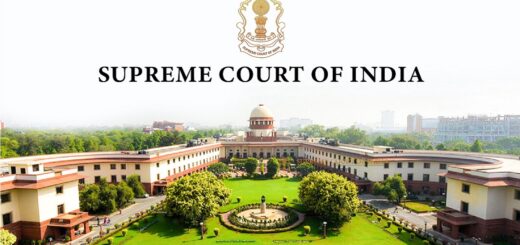Orissa High Court Confirms Conviction of Ex-MLA in Case of Killing His Pregnant Wife, Says Suicide Unlikely.

The Orissa High Court confirmed the conviction of former MLA Ramamurty Gamango, who was charged with killing his pregnant wife. The MLA appealed to overturn the conviction made by the Trial Court. A Division Bench, consisting of Justice S.K. Sahoo and Justice Chittaranjan Dash, stated that the evidence of asphyxia, along with witness D.W.1’s description of prolonged burning, suggests that the deceased was not merely a fire victim but may have been intentionally placed in a situation that caused her to suffer from both smoke inhalation and severe burns. Witness P.W.9 clearly indicated that the death was not accidental, limiting the possible causes to either suicide or homicide. However, the circumstances surrounding the case make it very unlikely that the death was a suicide.
According to the prosecution, the accused and his wife lived in a colony since 1990. One morning in 1995, when his wife got up late, he expressed his anger. While he was reading the newspaper in the bedroom, he heard her scream. He rushed to the bathroom with the kitchen boy and others, only to find the bathroom door locked from the inside. Smoke was coming from the room, so they poured water through the window. They forced the door open and discovered that the accused’s wife had allegedly committed suicide by setting herself on fire. This led to a case being filed, and the investigation uncovered injuries on the body, indicating that the death was likely a murder and an attempt to cover it up.
The deceased was pregnant, and during the investigation, there were rumors that the accused doubted her loyalty. Forensic reports and circumstantial evidence, along with the lack of defensive wounds or signs of a struggle, led to the conclusion that her death was a homicide. This resulted in charges under Sections 302 and 201 of the Indian Penal Code (IPC). The Trial Court found the accused guilty and sentenced him to life imprisonment with a fine of Rs. 50,000. He then appealed his conviction to the High Court. The High Court noted, “The testimony of P.W.9 supports the homicide theory by emphasizing the deceased’s pregnancy. She was about 14-16 weeks along at the time of her death, which makes suicide less likely. A pregnant woman in her second trimester is driven by a strong instinct to protect her unborn child, making it improbable that she would harm herself or her baby without a serious reason.”
The Court also pointed out that there was no evidence of emotional distress, suicidal thoughts, or any circumstances that could push a pregnant woman to take such a drastic action, further reducing the chances of suicide.The pregnancy is a key element in the investigation, indicating that the deceased was likely a victim of murder. Her pregnancy may have increased tensions in her marriage, suggesting she would not have chosen to end her life or that of her unborn child. The medical officer’s report, along with evidence of a troubled relationship between the Appellant and his wife, points to a possible motive for the crime. The Court also noted that, even though the Forensic Science Laboratory was close to the Trial Court, the case faced multiple delays due to the missing original Chemical Examination Report, with little effort made to obtain it quickly. Additionally, the nearly four-year gap in witness examinations, from the first on June 24, 2014, to the last on February 12, 2018, shows an unacceptably slow process that does not align with the standards of a fair trial. While the appellant may have caused some delays, the Trial Court’s inaction in allowing such long adjournments is concerning, as it weakens the justice system’s ability to follow proper procedures.
The prosecution has proven, beyond a reasonable doubt, that the Appellant deliberately caused his wife’s death, meeting the criteria for murder under Section 302 IPC. The forensic evidence, including injuries on the deceased, soot in her trachea from inhaling smoke, and the Appellant’s unlikely suicide claims, rule out any explanation other than intentional homicide. As a result, the High Court rejected the appeal and confirmed the accused’s conviction.
Cause Title- Ramamurty Gamango v. State of Odisha









